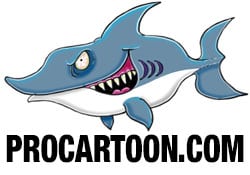Use Graphic And Cartoon Art To Enhance Your Educational Signage Skills
In today’s visually-driven world, effective educational signage goes beyond mere information delivery; it’s an art form that communicates messages, captures attention, and leaves a lasting impact.

The fusion of graphic and cartoon art within signage has opened exciting avenues for artists, designers, and businesses to stand out in a crowded marketplace.
Here is how you can harness the power of graphic and cartoon art to elevate your signage skills, captivating audiences and enhancing your creative expression:
Graphics and Cartoons in Educational Signage: A Winning Combination
The dynamic blend of graphics and cartoons brings a unique storytelling aspect to signage. Graphics lend a modern, sleek touch, while cartoons infuse charm and relatability. When harmoniously integrated, these elements create an inviting visual narrative that engages viewers on a deeper level.
The Basics of Graphic and Cartoon Signage
- Typography with a Twist: Typography is the foundation of signage. Incorporate imaginative typography with cartoon elements to create attention-grabbing headlines and messages.
- Character Development: Characters are the heart of cartoon art. Design memorable, relatable characters, and align them with your message or brand. Characters can serve as mascots, guiding viewers through your visual story and company ethos.
- Color Psychology: Colors evoke emotions and influence perceptions. Utilize colors strategically to produce specific feelings in your audience. Bright and vibrant colors can create a sense of excitement, while muted tones can evoke nostalgia or elegance.
- Visual Hierarchy: The arrangement of elements in your signage guides the viewer’s eye. Use visual hierarchy to emphasize important information, leading the viewer through your message in a logical sequence.
The Power of Storytelling
- Narrative-driven Signage: People are drawn to stories. Craft a visual story within your signage that captures curiosity and ignites the imagination. Whether a simple narrative or a more complex tale, a story can make your signage more memorable.
- Sequential Art: Comic strip-style layouts are a powerful way to convey a story. Use a sequence of panels to lead viewers through a narrative. This technique is particularly effective for instructional signage or showcasing a series of events.
- Emotion Elicitation: Cartoons are adept at evoking emotions. Use your characters’ expressions, body language, and interactions to convey feelings that resonate with your audience, making your signage relatable and impactful.
Branding and Identity
- Visual Consistency: Your educational signage should align with your brand’s visual identity. Incorporate consistent colors, typography, and design elements to reinforce brand recognition and create a cohesive visual experience.
- Customization: Tailor your characters and graphics to align with your brand’s values and personality. Whether it’s a playful and whimsical style or a sleek and professional look, customization helps establish a strong brand presence.
Interactive and Dynamic Educational Signage
- Augmented Reality (AR): Embrace technology by integrating AR elements into your signage. AR can bring your characters and graphics to life, providing viewers with an interactive and immersive experience.
- Animated Elements: Even static signage can have a sense of movement. Incorporate subtle animations to add dynamism to your designs. Animations can draw attention and make your signage more engaging.
Techniques and Tools for Graphic and Cartoon Signage
- Digital Illustration Software: Explore tools like Adobe Illustrator to create scalable vector graphics without losing quality. This is crucial for maintaining the integrity of your designs, no matter the size.
- Tablets and Pen Displays: For a hands-on drawing experience, consider using graphic tablets or pen displays. These tools allow for precise control and mimic the feeling of traditional drawing.
- Brushwork and Textures: Experiment with various brush styles and textures to add depth and visual interest to your designs. Textures can give your signage a tactile quality that enhances its appeal.
Showcasing Your Talent
- Portfolio Development: Create a portfolio showcasing your graphic and cartoon signage expertise. Highlight a diverse range of projects to demonstrate your versatility and attract potential clients.
- Social Media: Share your creative process and finished work on Instagram, Behance, and Pinterest platforms. Social media provides a platform to connect with fellow artists, potential clients, and enthusiasts.
Collaborating with Businesses
- Retail Environments: Enhance the shopping experience using graphic and cartoon signage to create an inviting atmosphere. Signage can convey brand identity and help customers navigate the store.
- Restaurants and Cafés: Signage in food establishments isn’t just about conveying information and setting the ambiance. Use graphic and cartoon elements to match the establishment’s theme and enhance the dining experience.
- Event Promotion: Create captivating event signage that informs and excites attendees. Use graphics and cartoons to convey the event’s vibe and theme, encouraging participation.
Ethical Considerations
- Cultural Sensitivity: When designing characters, be mindful of cultural diversity and potential stereotypes. Ensure that your characters are inclusive and respectful of different cultures.
- Accessibility: Make sure your signage is accessible to everyone, including individuals with disabilities. Consider factors like font legibility, color contrast, and tactile elements for a universally inclusive experience.
 In Conclusion:
In Conclusion:
Embracing the fusion of graphic and cartoon art within educational signage is an opportunity to breathe life into your creative expressions. By mastering the techniques, tools, and strategies mentioned in this article, you can enhance your signage skills and create captivating visuals that leave a lasting impression on viewers.
Whether you’re a seasoned designer or just starting, the graphic and cartoon signage world has endless possibilities to explore.
So go ahead, unleash your creativity, and make your mark in the world of visual storytelling.
Guest Post

